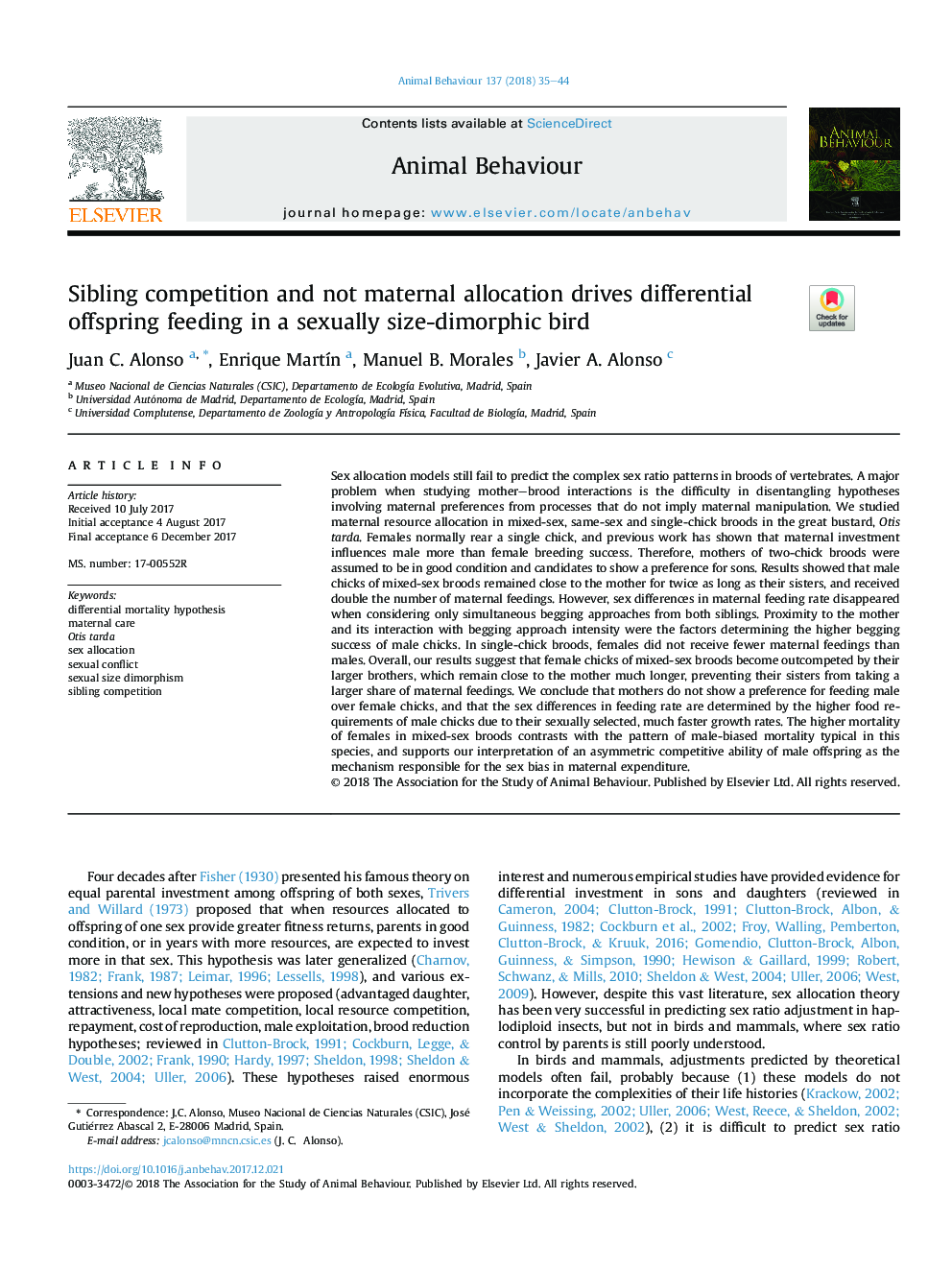| کد مقاله | کد نشریه | سال انتشار | مقاله انگلیسی | نسخه تمام متن |
|---|---|---|---|---|
| 8488620 | 1552191 | 2018 | 10 صفحه PDF | دانلود رایگان |
عنوان انگلیسی مقاله ISI
Sibling competition and not maternal allocation drives differential offspring feeding in a sexually size-dimorphic bird
ترجمه فارسی عنوان
رقابت خواهر و نه تخصیص مادران، تغذیه افترافکت فرزند را در یک پرنده اندازه گیری شده اندازه گیری می کند
دانلود مقاله + سفارش ترجمه
دانلود مقاله ISI انگلیسی
رایگان برای ایرانیان
کلمات کلیدی
موضوعات مرتبط
علوم زیستی و بیوفناوری
علوم کشاورزی و بیولوژیک
علوم دامی و جانورشناسی
چکیده انگلیسی
Sex allocation models still fail to predict the complex sex ratio patterns in broods of vertebrates. A major problem when studying mother-brood interactions is the difficulty in disentangling hypotheses involving maternal preferences from processes that do not imply maternal manipulation. We studied maternal resource allocation in mixed-sex, same-sex and single-chick broods in the great bustard, Otis tarda. Females normally rear a single chick, and previous work has shown that maternal investment influences male more than female breeding success. Therefore, mothers of two-chick broods were assumed to be in good condition and candidates to show a preference for sons. Results showed that male chicks of mixed-sex broods remained close to the mother for twice as long as their sisters, and received double the number of maternal feedings. However, sex differences in maternal feeding rate disappeared when considering only simultaneous begging approaches from both siblings. Proximity to the mother and its interaction with begging approach intensity were the factors determining the higher begging success of male chicks. In single-chick broods, females did not receive fewer maternal feedings than males. Overall, our results suggest that female chicks of mixed-sex broods become outcompeted by their larger brothers, which remain close to the mother much longer, preventing their sisters from taking a larger share of maternal feedings. We conclude that mothers do not show a preference for feeding male over female chicks, and that the sex differences in feeding rate are determined by the higher food requirements of male chicks due to their sexually selected, much faster growth rates. The higher mortality of females in mixed-sex broods contrasts with the pattern of male-biased mortality typical in this species, and supports our interpretation of an asymmetric competitive ability of male offspring as the mechanism responsible for the sex bias in maternal expenditure.
ناشر
Database: Elsevier - ScienceDirect (ساینس دایرکت)
Journal: Animal Behaviour - Volume 137, March 2018, Pages 35-44
Journal: Animal Behaviour - Volume 137, March 2018, Pages 35-44
نویسندگان
Juan C. Alonso, Enrique MartÃn, Manuel B. Morales, Javier A. Alonso,
